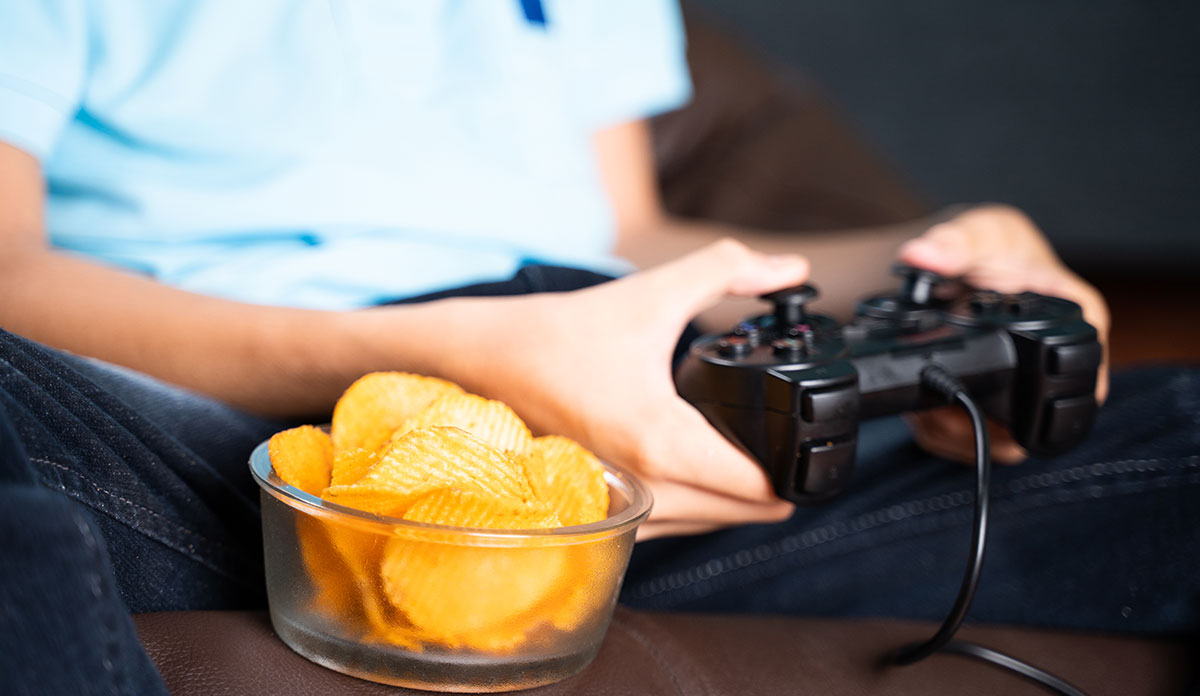Food marketing is a powerful contributor to the unhealthy food environment that most of us find ourselves in today. People are constantly bombarded with messages to eat more nutrient-poor, energy-dense foods. Food marketing has traditionally thrived in media such as television but has now rapidly expanded out to digital platforms and social media. Livestreaming is the new frontier in digital media platforms combining live user-generated entertainment and social media into one cohesive online experience.
Livestreaming was born out of the video gaming community as a way for people to watch their favorite gamers and e-sports stars play games and train for tournaments. It has rapidly evolved into a massive billion-dollar industry. For example, Amazon bought the largest livestreaming service, Twitch.tv, for $970 million in 2015. Subsequently Microsoft, Facebook, and YouTube have all tried their hand at developing similar platforms or services.
Livestreaming platforms have since expanded from their video game roots to provide a variety of live entertainment options including art, modeling, music, cooking, and many others. They provide creators both big and small with a means to express themselves and their talents while interacting with their viewers in real time. Livestreaming has also provided unparalleled opportunities for marketers to reach unique consumer demographics in a compelling and unique way.
One reason livestreaming may be a gold mine for selling products is that it allows brands to align themselves with livestreaming content creators, or “streamers”, who interact with their audiences on a daily basis to sell their products. This provides a level of product integration and marketing authenticity that is hard to reproduce in other mediums, including other social media platforms like Facebook or Instagram.
For example, my research group has previously polled individuals who use both livestreaming platforms, like Twitch, and asynchronous entertainment websites, like YouTube. We found that advertising on livestreaming websites was viewed more favorably because viewers tended to feel that the advertising revenue was benefiting their favorite livestreaming personalities rather than the larger company. These users also reported seeing a high amount of food marketing and experiencing cravings for these products, which eventually led to purchasing them.
In one of our most recent studies, we wanted to compare how much food marketing was happening across the three major livestreaming platforms: Twitch, Facebook Gaming, and YouTube Live. Our previous work found a staggering amount of food marketing happening on Twitch, primarily for energy drinks and fast food restaurants, which grew between 2018 and 2019. In our new paper we report that this growth trend continued through 2020 and 2021. We also observed similar patterns of advertising across the three major platforms with large amounts of advertising happening for energy drinks, fast food restaurants, and ultra-processed foods such as snacks and candy.
One really important finding from our most recent analysis was the impact of the Covid-19 pandemic. The pandemic led to people consuming more online entertainment, and marketing dollars followed the viewers into online spaces. We were able to pick up on this shift and we reported significant increases in the amount of food marketing happening on livestreaming platforms. This surge in food marketing content continued to accelerate throughout the pandemic and has brought us to an all-time high in the amount of food marketing we see. This trend seems likely to stick around.
The pandemic has ushered in a new era of online advertising and our laboratory is looking to be at the forefront of monitoring and understanding the impact of this type of advertising on the overall health of viewers. For example, we currently have plans to investigate how users engage with streamers through the chat functions of these websites while food marketing campaigns are running. We also want to understand how advertising campaigns on livestreaming services spread out onto other social media platforms as they are shared by content creators and their audiences.
Photo via Getty Images














